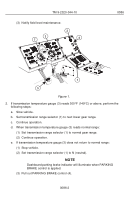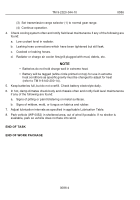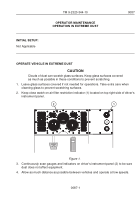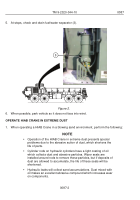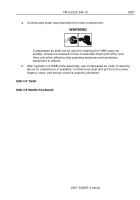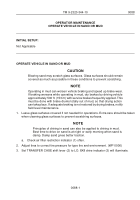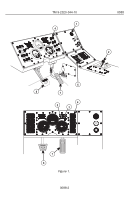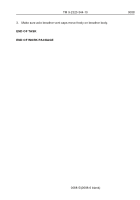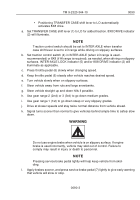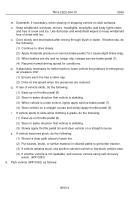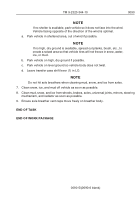TM-9-2320-344-10 - Page 574 of 1012
NOTE
•
Operation of the HIAB Crane in blowing sand presents special
problems due to the abrasive action of sand, which shortens the
life of parts.
•
Cylinder rods on hydraulic cylinders have a light coating of oil
which collects sand and abrasive particles. Wiper seals are
installed around rods to remove these particles, but if deposits of
sand are allowed to accumulate, the life of these seals will be
shortened.
•
Hydraulic leaks will collect sand accumulations. Sand mixed with
oil makes an excellent abrasive compound which increases wear
on components.
a.
Continuously clean sand deposits from crane components.
WARNING
Compressed air shall not be used for cleaning the HIAB crane as-
sembly, unless it is reduced in force to less than 30 psi (207 kPa), and
then only when effective chip-guarding and personnel-protective
equipment is utilized.
b.
After operation of HIAB crane assembly, use compressed air (refer to warning
above for restrictions), if available, to blow loose sand and grit from the crane.
Inspect, clean, and ensure crane is properly lubricated.
PARK VEHICLE
1.
Park vehicle as follows:
a.
Vehicle should not face into wind.
b.
Clean mud off vehicle as soon as possible.
CAUTION
•
Do not hit axle breathers when cleaning mud from axles.
•
Do not direct high pressure water stream at glass surfaces, seals, air
intake, axle breathers, exhaust outlet, or any other component of
vehicle that could be easily damaged by high pressure water stream.
2.
Clean mud from wheels, brakes, axles, universal joints, steering mechanism, and
radiator as soon as possible.
TM 9-2320-344-10
0088
0088-4
Back to Top

